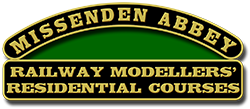Tools
- Filbert brush – soft, firm bristles shaped into a rounded but flat end. Holds pigment particles forever and a day, and the shape gives many opportunities for accurately placing them.
- Paper towels – to wipe the brush when you pick up too much pigment, and to clean up the mess.
Materials
- MIG Productions P033 Dark Mud and P414 Track Brown pigments. These are out of production but can now be found as Abteilung 502 products ABTP033 Dark Mud and ABTP414 Track Rust. Same stuff, different labels. Used to represent new rust and old rust respectively.
Process
I have a Hornby S15 awaiting attention and it will need to have a well-used tender behind.
The coal load is easily removed, and the coal space will be portrayed as nearly empty, so the interior needs to be suitably distressed.
To protect the remainder of the bodywork I have created a card mask that fits around the top edge of the tender. Testor’s Dullcote has been applied across the top. Note that the spray booth was operating at full blast when doing this, you don’t want to breathe in Testor’s Dullcote. Any matt varnish would do the job required here, just to create a uniformly matt surface to work on.
I have collected a small quantity of pigment from the inside of the pot lid and, using the rounded edge of the filbert brush, applied it to the lines of rivets in the tender water area (for want of a better, or the correct, name). The colour used is Track Brown, and application continued along all panel edges and rivet lines.
A change of pigment, now, to Dark Mud. The same method of picking up the pigment from the pot lid and applying to the tender was used, except that the flat edge of the filbert brush was used. This allowed the spreading of the new colour to blend in with the darker tone to prevent hard lines appearing between tones and colours.
The result. A rusty surface, ready for the deposits of water and coal dust to finish things off. When completed this tender will have real coal added at the bottom of the coal space, and some coal dust distributed around the whole space, like this view, albeit of a different locomotive:
